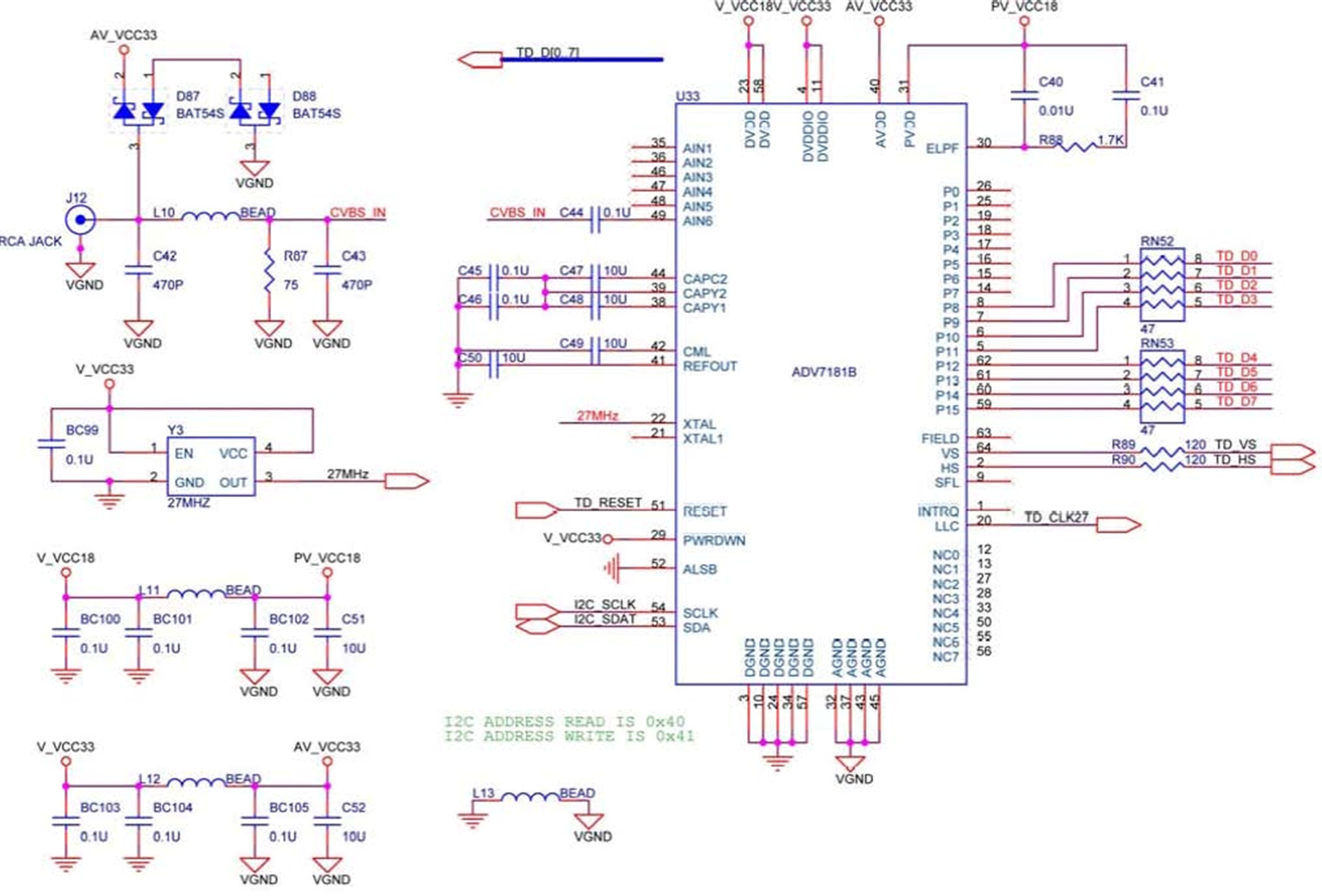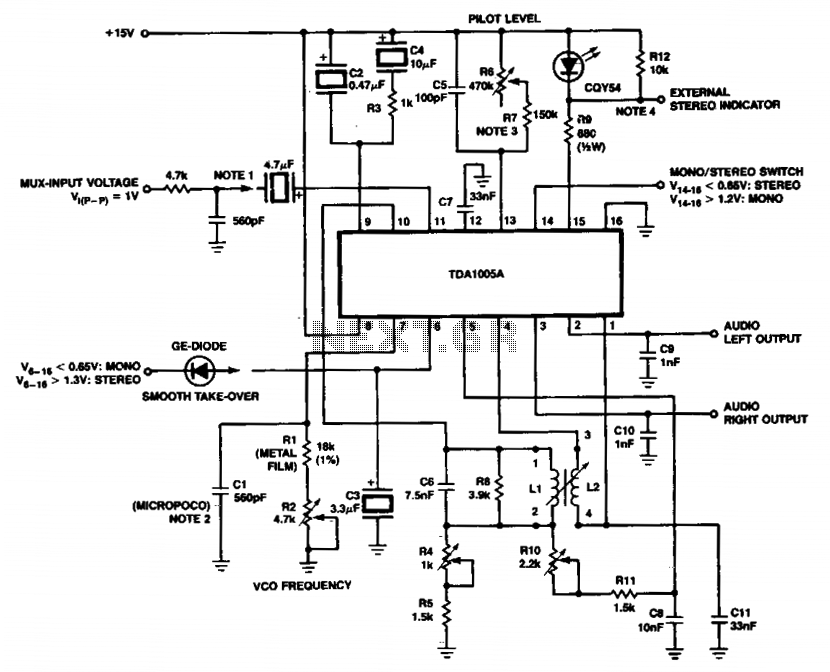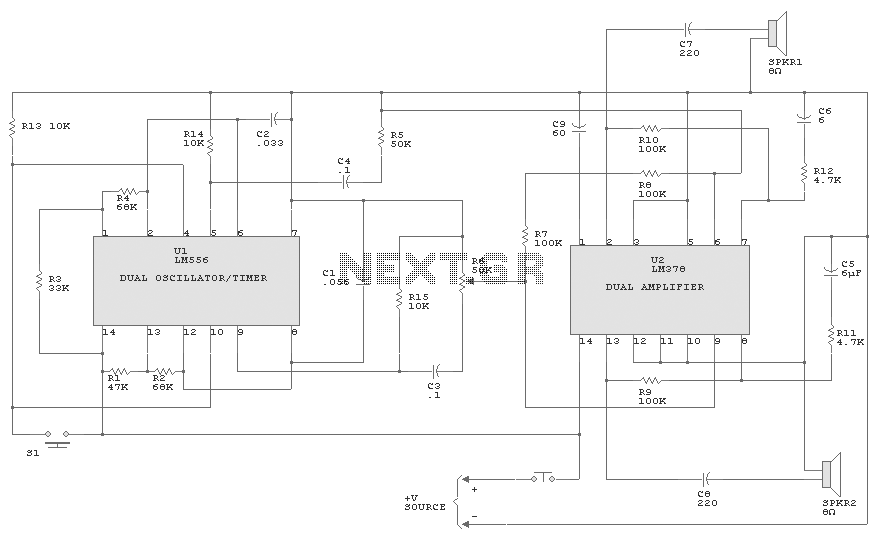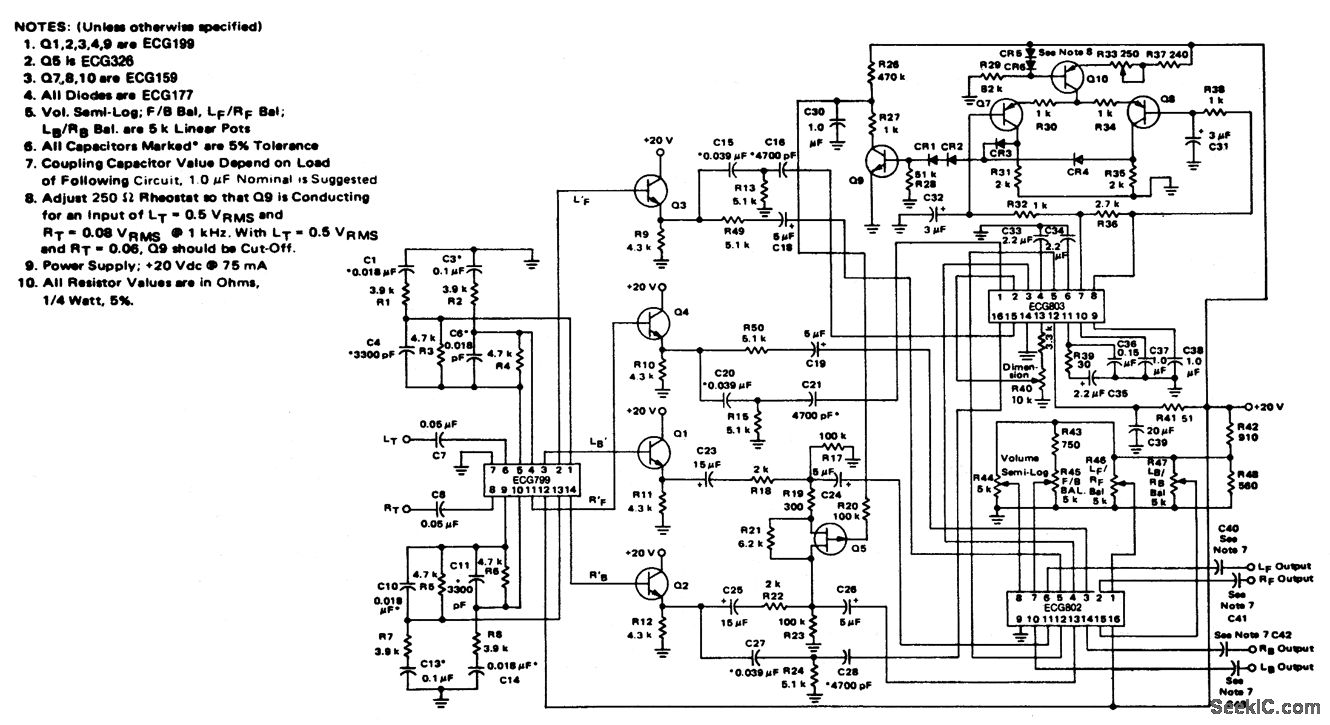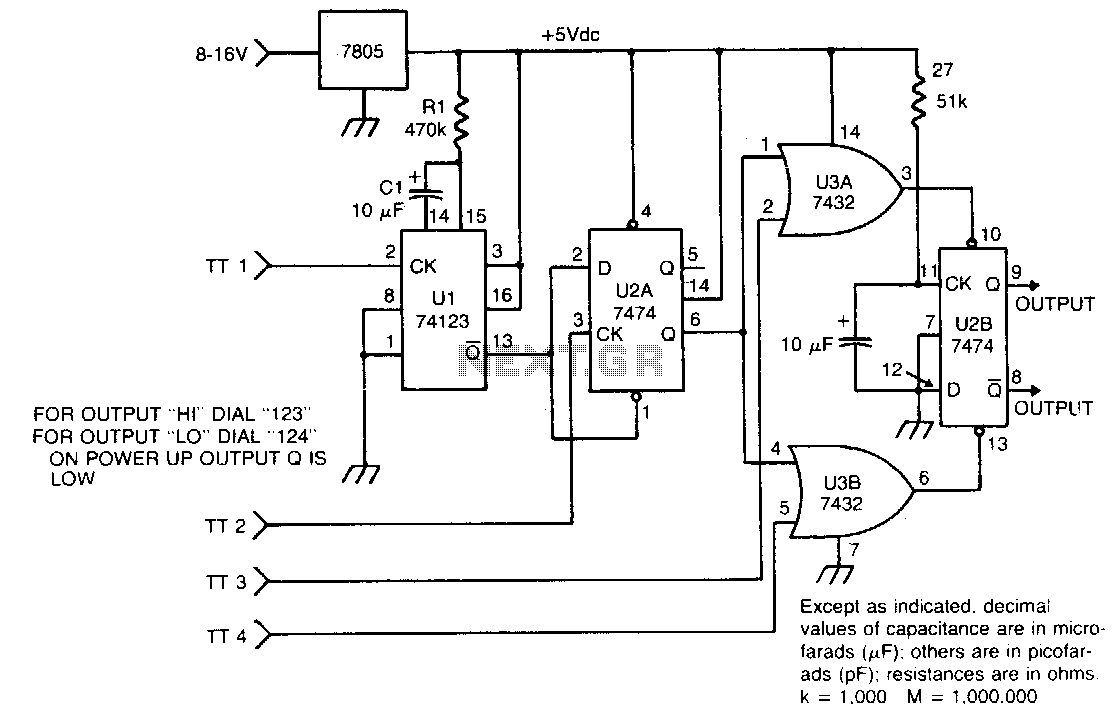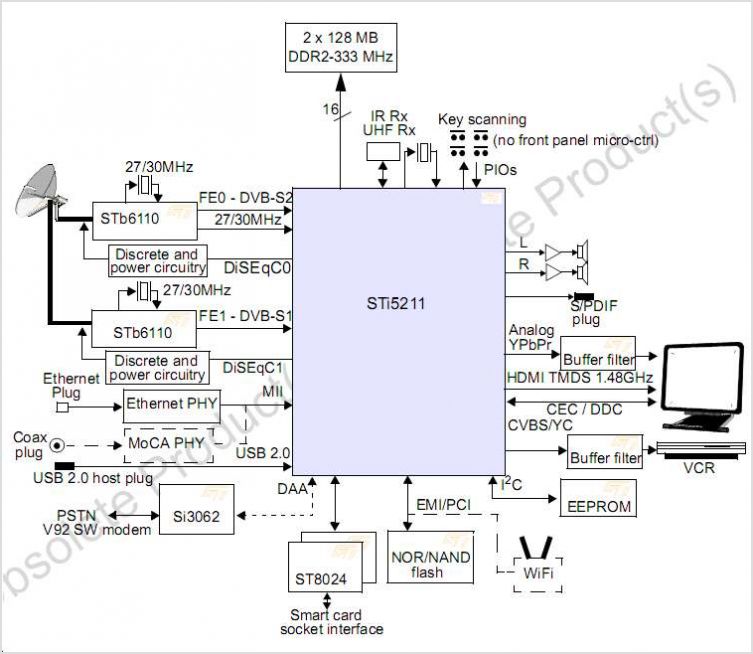
Dual-Tone (Frequency) Decoder (Detector)
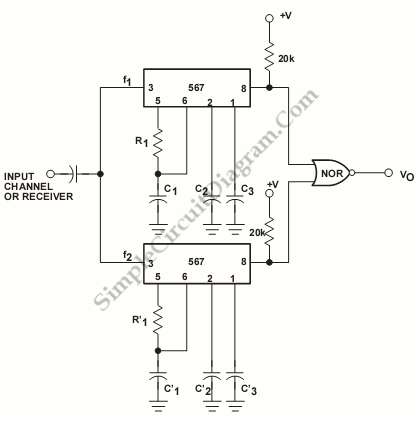
The output of this circuit will be activated when a mix of two tones or frequencies is detected at the input. The frequency, denoted as f, is determined by the values of resistor R1 and additional components.
This circuit is designed to detect and respond to a specific combination of audio frequencies, utilizing a frequency detection mechanism. The input stage typically consists of a microphone or audio signal input, which captures the sound waves. The circuit processes these signals through a bandpass filter, which is configured to isolate the desired frequency range based on the values of resistors and capacitors.
The resistor R1 plays a crucial role in setting the cutoff frequency of the filter, alongside other components such as capacitors (C1, C2) and potentially additional resistors (R2, R3). The relationship between these components can be expressed using the standard formula for the cutoff frequency of an RC filter, which is given by:
\[ f_c = \frac{1}{2\pi R C} \]
where \( f_c \) is the cutoff frequency, R is the resistance, and C is the capacitance. By adjusting the values of R1 and the associated capacitors, the circuit can be tuned to respond specifically to the mixed tones.
Once the desired frequencies are detected, the output stage of the circuit is activated. This output can be configured to drive an LED indicator, trigger a relay, or send a signal to a microcontroller for further processing. The activation mechanism may utilize a comparator or an operational amplifier configured as a Schmitt trigger to ensure a clean transition and minimize false triggering due to noise.
Overall, this circuit serves as a frequency detection system that can be applied in various applications, including audio processing, communication systems, and sound-based control mechanisms. The careful selection of component values is essential to ensure the circuit operates effectively within the intended frequency range.The output of this circuit will be activated when a mix of two tone/frequency is detected on the input. The frequency f is determined by the values of R1 and.. 🔗 External reference
This circuit is designed to detect and respond to a specific combination of audio frequencies, utilizing a frequency detection mechanism. The input stage typically consists of a microphone or audio signal input, which captures the sound waves. The circuit processes these signals through a bandpass filter, which is configured to isolate the desired frequency range based on the values of resistors and capacitors.
The resistor R1 plays a crucial role in setting the cutoff frequency of the filter, alongside other components such as capacitors (C1, C2) and potentially additional resistors (R2, R3). The relationship between these components can be expressed using the standard formula for the cutoff frequency of an RC filter, which is given by:
\[ f_c = \frac{1}{2\pi R C} \]
where \( f_c \) is the cutoff frequency, R is the resistance, and C is the capacitance. By adjusting the values of R1 and the associated capacitors, the circuit can be tuned to respond specifically to the mixed tones.
Once the desired frequencies are detected, the output stage of the circuit is activated. This output can be configured to drive an LED indicator, trigger a relay, or send a signal to a microcontroller for further processing. The activation mechanism may utilize a comparator or an operational amplifier configured as a Schmitt trigger to ensure a clean transition and minimize false triggering due to noise.
Overall, this circuit serves as a frequency detection system that can be applied in various applications, including audio processing, communication systems, and sound-based control mechanisms. The careful selection of component values is essential to ensure the circuit operates effectively within the intended frequency range.The output of this circuit will be activated when a mix of two tone/frequency is detected on the input. The frequency f is determined by the values of R1 and.. 🔗 External reference
